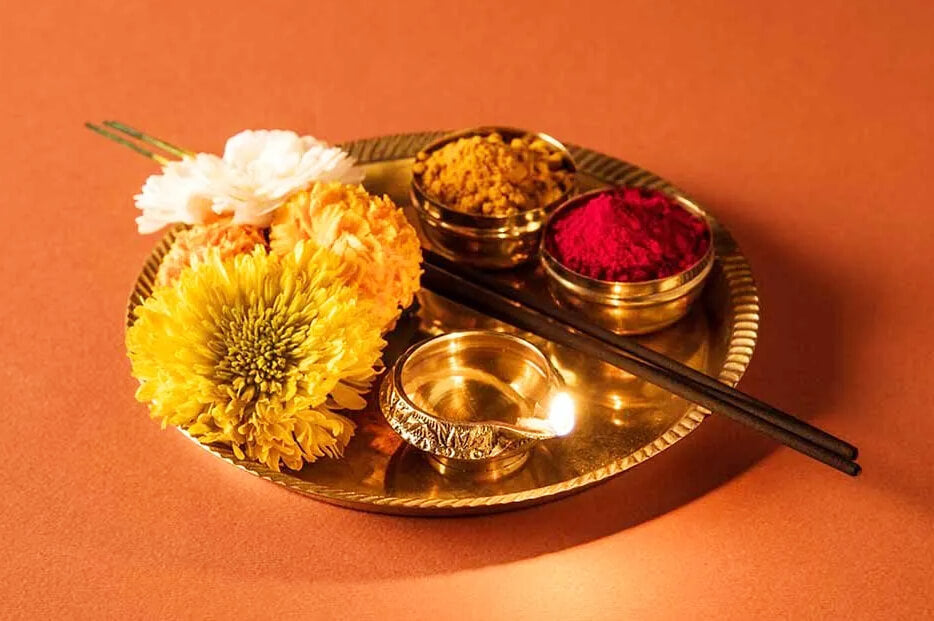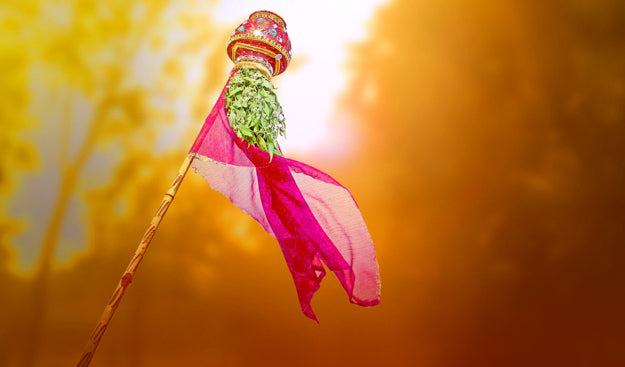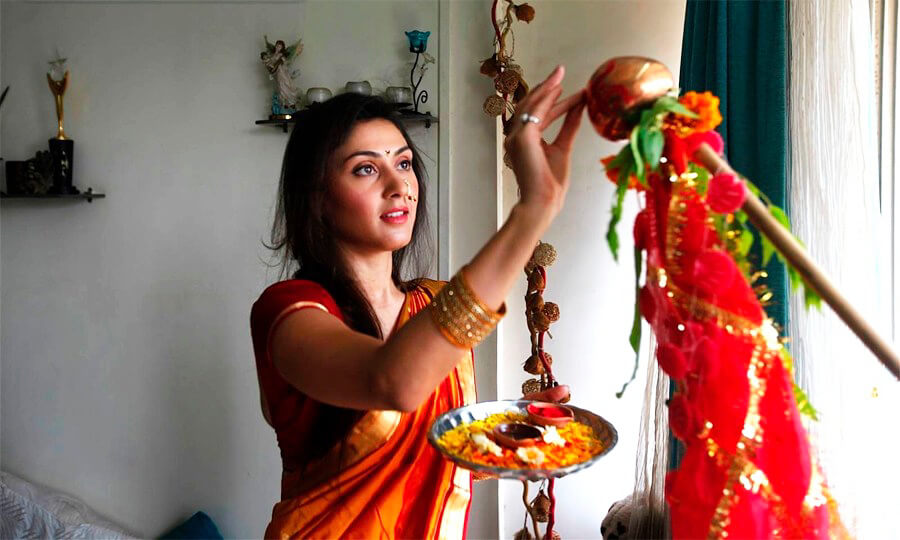Gudi Padwa: The Maharashtrian New Year Celebration
Gudi Padwa, also known as Marathi New Year, marks the beginning of the traditional Hindu lunar calendar and is celebrated with great enthusiasm in Maharashtra and parts of India. This vibrant festival not only signifies the arrival of spring but also symbolizes new beginnings, prosperity, and the triumph of good over evil. In this comprehensive guide, we delve into the rich cultural heritage of Gudi Padwa, its symbolism, the significance of traditional attire, and how to style yourself for this auspicious occasion.
Understanding Gudi Padwa:
Gudi Padwa falls on the first day of the Chaitra month, according to the Hindu lunisolar calendar, typically in March or April. It holds immense significance as it marks the onset of the agricultural season and is believed to be the day when Lord Brahma created the universe. The festival also commemorates the victorious return of Lord Rama to Ayodhya after his exile and slaying of the demon king Ravana.

The central element of Gudi Padwa celebrations is the Gudi, a decorated bamboo stick adorned with silk cloth, neem leaves, marigold flowers, and a copper or silver pot placed on top. As a representation of luck, prosperity, and victory, the Gudi is raised outside houses. It is believed to ward off evil spirits and bring blessings into the household. The act of raising the Gudi signifies the triumph of good over evil and the beginning of a new year filled with hope and happiness.

Traditional Attire for Gudi Padwa:
Dressing up in traditional attire adds to the festive charm of Gudi Padwa celebrations. For women, a nine-yard Maharashtrian saree known as a 'Nauvari' or a 'Paithani' saree adorned with intricate golden motifs is a popular choice. These sarees exude elegance and grace, reflecting the cultural heritage of Maharashtra. Paired with traditional jewelry such as a 'Nath' (nose ring), 'Chandra Kor' (moon-shaped earrings), and 'Bangles,' women can create a stunning ensemble that captures the essence of Gudi Padwa.
Men traditionally wear a 'Dhoti' paired with a 'Kurta' and a 'Pheta' (turban) for Gudi Padwa celebrations. The Pheta, adorned with gold or silver motifs, adds a regal touch to the attire and symbolizes prosperity and dignity. Completing the look with traditional footwear like 'Mojaris' or 'Kolhapuris' enhances the traditional appeal.

Choose Vibrant Colors: Opt for bright and vibrant colors such as red, yellow, green, and orange, symbolizing joy, prosperity, and vitality. These colors reflect the festive spirit of Gudi Padwa and add cheerfulness to your attire.
Accessorize Thoughtfully: Select traditional jewelry pieces like 'Kolhapuri Saaj' (necklace), 'Bugadi' (earrings), and 'Vanki' (armlet) to accessorize your outfit. These intricate ornaments not only accentuate your look but also pay homage to Maharashtra's rich cultural heritage.

Embrace Traditional Fabrics: Embrace traditional Maharashtrian fabrics like silk, cotton, and chiffon, known for their exquisite craftsmanship and superior quality. These fabrics drape gracefully and lend a touch of sophistication to your attire, making you stand out on this auspicious day.
Pay Attention to Details: Pay attention to the finer details such as pleats, drapes, and embellishments while styling your outfit. Neatly pleated sarees and well-coordinated accessories enhance your overall appearance, exuding elegance and charm.
Experiment with Hairstyles: Experiment with traditional hairstyles like the 'Bun' adorned with flowers or the 'Peshwai Braid' adorned with 'Mogra' (jasmine flowers). These hairstyles not only complement your traditional attire but also add a touch of glamour to your look.

Celebrating Gudi Padwa:
Apart from dressing up in traditional attire, Gudi Padwa celebrations involve various rituals and customs. Families come together to clean and decorate their homes, prepare festive meals, and exchange sweets and gifts with loved ones. Community gatherings, cultural performances, and processions are also organized to mark the occasion.
Gudi Padwa is not just a festival; it's a celebration of culture, tradition, and new beginnings. By understanding the symbolism behind the festival and embracing traditional attire, you can truly immerse yourself in the festive spirit of Gudi Padwa. Whether you choose to wear a graceful saree or don traditional attire, remember to style yourself with confidence and grace, embodying the essence of Maharashtrian culture and heritage. Wishing you a joyous and prosperous Gudi Padwa filled with love, laughter, and blessings!
FAQs
- What is Gudi Padwa?
Gudi Padwa, also known as Marathi New Year, is a Hindu festival celebrated in Maharashtra and other parts of India to mark the beginning of the traditional lunar calendar.
- When is Gudi Padwa celebrated?
Gudi Padwa falls on the first day of the Chaitra month, typically in March or April, according to the Hindu lunisolar calendar.
- What is the significance of Gudi Padwa?
Gudi Padwa symbolizes new beginnings, prosperity, and the victory of good over evil. It also marks the onset of the agricultural season and is associated with various mythological and historical events.
- How is Gudi Padwa celebrated?
Gudi Padwa celebrations involve hoisting a Gudi outside homes, preparing festive meals, exchanging sweets and gifts, cleaning and decorating homes, and participating in community gatherings and cultural events.
- What is a Gudi?
A Gudi is a decorated bamboo stick adorned with silk cloth, neem leaves, marigold flowers, and a copper or silver pot placed on top. It is hoisted outside homes during Gudi Padwa to symbolize victory and prosperity.
- What are the traditional attire options for Gudi Padwa?
Traditional attire for women includes Nauvari or Paithani sarees, while men typically wear Dhoti-Kurta paired with a Pheta (turban). Both attire options are rich in cultural significance and reflect the heritage of Maharashtra.
- What are some traditional dishes prepared during Gudi Padwa?
Some traditional dishes prepared during Gudi Padwa include Puran Poli, Shrikhand, Poori Bhaji, Batata Vada, and Sakkarai Pongal. These dishes vary by region but are commonly enjoyed during the festival.
- What are some common rituals observed during Gudi Padwa?
Common rituals observed during Gudi Padwa include cleaning and decorating homes, hoisting the Gudi, performing puja (prayers), preparing festive meals, and visiting temples to seek blessings.
- Is Gudi Padwa celebrated differently in different regions of Maharashtra?
Yes, Gudi Padwa may be celebrated differently in different regions of Maharashtra, with variations in rituals, customs, and traditional dishes. The festival's core idea hasn't changed, nevertheless.
- Are there any specific symbols associated with Gudi Padwa?
Yes, apart from the Gudi, other symbols associated with Gudi Padwa include neem leaves, mango leaves, marigold flowers, and traditional motifs that represent auspiciousness and prosperity.
- Can non-Maharashtrians participate in Gudi Padwa celebrations?
Absolutely! Gudi Padwa is a festival celebrated by people of all backgrounds and communities. Non-Maharashtrians are welcome to participate in the festivities, learn about the traditions, and enjoy the cultural experience.
- Are there any special events or activities organized during Gudi Padwa?




